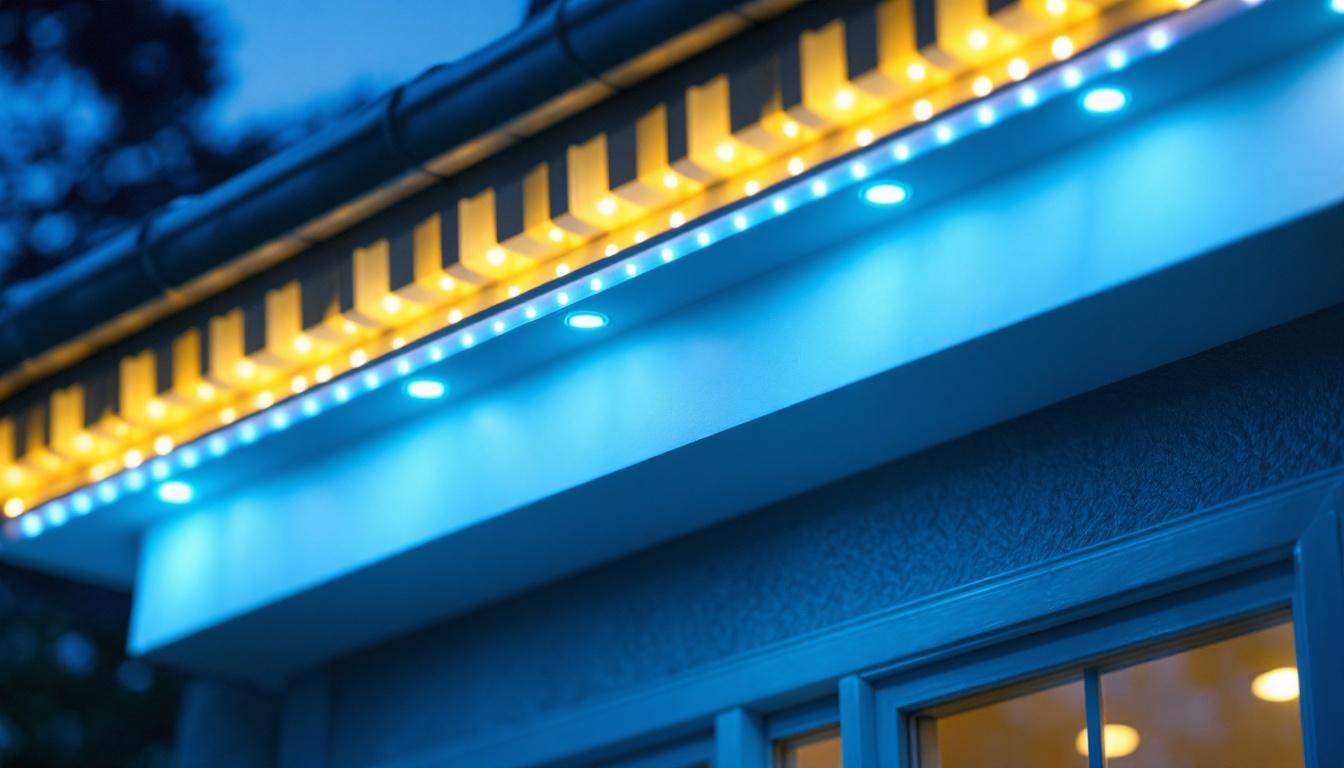
In the ever-evolving field of lighting, occupancy light switches have become a staple for enhancing energy efficiency and convenience in both residential and commercial settings. However, despite their growing popularity, many lighting contractors still make critical mistakes when installing and configuring these devices. This guide aims to highlight common pitfalls and provide insights that will help contractors deliver optimal solutions to their clients.
Before diving into the mistakes to avoid, it is essential to understand what occupancy sensors are and how they function. These devices detect the presence of individuals in a room and automatically control lighting based on occupancy. They can be passive infrared (PIR), ultrasonic, or dual-technology sensors, each with its own set of advantages and ideal applications. By utilizing these sensors, facilities can significantly reduce energy consumption and enhance user comfort, as lights will only be on when needed.
For lighting contractors, a thorough understanding of these technologies is crucial. It not only aids in selecting the right sensor for a specific environment but also ensures that installations comply with local codes and regulations. Understanding the operational principles behind each type of sensor helps in troubleshooting and optimizing their performance post-installation. Moreover, being knowledgeable about occupancy sensors can also empower contractors to provide valuable insights to clients, helping them make informed decisions about energy efficiency and cost savings.
Occupancy sensors can be categorized into three main types: passive infrared (PIR), ultrasonic, and dual-technology. Each type has unique characteristics that make them suitable for different applications. Choosing the right type of sensor for a particular space can greatly enhance the efficiency of the lighting system and improve user experience.
In addition to these types, it’s worth noting that occupancy sensors can also be integrated with smart building technologies. This integration allows for advanced features such as remote monitoring and control, data analytics on occupancy patterns, and seamless communication with other building systems. Such capabilities not only enhance energy efficiency but also contribute to a more responsive and adaptive environment, catering to the needs of occupants in real-time. As the demand for smart solutions continues to rise, understanding these integrations becomes increasingly important for lighting professionals.
Installing occupancy light switches may seem straightforward, but there are several common mistakes that can lead to ineffective operation and dissatisfied clients. Awareness of these pitfalls can significantly improve installation quality and customer satisfaction.
One of the most significant errors lighting contractors make is installing occupancy sensors in inappropriate locations. For instance, placing a sensor too high or too low can hinder its ability to detect motion effectively. Ideally, sensors should be mounted at a height that maximizes their field of view while minimizing obstructions.
Additionally, sensors should be positioned away from sources of heat, such as HVAC vents, which can cause false triggers. Understanding the layout of the room and the typical movement patterns of occupants is essential for optimal sensor placement. For example, in a conference room, placing the sensor near the entrance can ensure it captures movement as people enter and exit, while avoiding placement near windows where sunlight could interfere with detection.
Each occupancy sensor has a specified coverage area, which should be taken into account during installation. Failing to consider this can result in dead zones where motion is not detected, leading to lights remaining on unnecessarily or turning off when they shouldn’t.
Contractors should carefully assess the dimensions of the space and the sensor’s specifications to ensure complete coverage. In larger areas, multiple sensors may be required to ensure that all corners are adequately monitored. Moreover, it’s important to consider the furniture layout; large pieces can obstruct the sensor’s line of sight, creating additional blind spots. Conducting a walk-through of the space prior to installation can help identify these potential issues and allow for adjustments to be made before finalizing sensor placement.
Once the sensors are installed, proper configuration is vital for their effectiveness. Incorrect settings can lead to issues such as lights turning off too soon or remaining on for extended periods, which defeats the purpose of energy savings.
Many occupancy sensors come with adjustable sensitivity settings that allow contractors to tailor the device’s responsiveness to the environment. Failing to adjust these settings can lead to either overly sensitive sensors that trigger with minimal movement or sensors that do not respond adequately to actual occupancy.
Contractors should test the sensor in the actual environment after installation to fine-tune sensitivity settings based on real-world conditions. This ensures that the sensor operates effectively and meets the client’s expectations.
Time delay settings determine how long the lights remain on after the last detected motion. Incorrectly configured time delays can result in lights turning off too quickly, leaving occupants in the dark, or staying on longer than necessary, wasting energy.
Contractors should discuss time delay preferences with clients to understand their needs better. For example, in a bathroom, a shorter delay may be appropriate, while in a conference room, a longer delay might be preferred to accommodate meetings.
Modern lighting systems often integrate with various technologies, such as smart home systems, HVAC controls, and security systems. Ignoring integration possibilities can limit the functionality and efficiency of occupancy sensors.
Before installation, it is crucial to assess the compatibility of occupancy sensors with existing systems. Some sensors may not work effectively with specific lighting controls or smart home platforms, leading to operational issues.
Contractors should consult product specifications and, if necessary, reach out to manufacturers for guidance on compatibility. This proactive approach can prevent future complications and ensure a seamless integration process.
Even the best-installed and configured occupancy sensors can lead to frustration if clients do not understand how to use them. Failing to provide adequate education on the operation and features of the system can result in misuse and dissatisfaction.
Contractors should take the time to explain how the sensors work, including how to adjust settings and troubleshoot common issues. Providing a user manual or quick reference guide can also be beneficial for clients.
Occupancy sensors, like any other technology, require regular maintenance and occasional troubleshooting. Neglecting these aspects can lead to decreased performance and increased client complaints.
Regular maintenance is essential for ensuring the longevity and effectiveness of occupancy sensors. Dust accumulation on the sensor lens can impair its ability to detect motion, leading to operational issues.
Contractors should recommend a maintenance schedule for clients, including periodic cleaning and inspections. This proactive approach helps maintain optimal performance and extends the lifespan of the devices.
When issues arise, having a clear troubleshooting protocol can save time and reduce frustration for both contractors and clients. Common problems may include false triggering, failure to detect motion, or issues with integration.
Contractors should familiarize themselves with troubleshooting steps for the specific sensors they install. Providing clients with a simple troubleshooting guide can empower them to resolve minor issues independently, enhancing their overall satisfaction.
Effective communication with clients is crucial throughout the installation process. Setting clear expectations can help prevent misunderstandings and ensure a smooth project flow.
Before starting an installation, it is essential to have a detailed discussion with clients about the project scope. This includes understanding their needs, preferences, and any specific requirements they may have for the occupancy sensors.
Contractors should take the time to listen to client concerns and address any questions they may have. This collaborative approach fosters trust and sets the stage for a successful installation.
After the installation is complete, offering ongoing support can significantly enhance client satisfaction. Whether it’s answering questions, providing maintenance tips, or assisting with troubleshooting, being available for clients can build long-term relationships.
Contractors should consider establishing a follow-up schedule to check in with clients after the installation. This proactive approach demonstrates commitment to quality service and can lead to referrals and repeat business.
Occupancy light switches are an excellent addition to modern lighting systems, offering energy savings and convenience. However, avoiding common mistakes in installation, configuration, and client communication is crucial for maximizing their benefits. By understanding the technology, ensuring proper placement and configuration, and maintaining open communication with clients, lighting contractors can enhance their service quality and client satisfaction.
In a competitive market, delivering exceptional service and avoiding these pitfalls can set contractors apart, leading to a successful and sustainable business. With the right knowledge and approach, contractors can harness the full potential of occupancy light switches, benefiting both their clients and the environment.
Ready to elevate your lighting installations with the best occupancy light switches on the market? Look no further than LumenWholesale for all your lighting needs. We provide contractors with high-quality, specification-grade lighting products at unbeatable wholesale prices, ensuring you can deliver exceptional service to your clients without breaking the bank. With our vast selection of reliable, high-performance lighting, free shipping on bulk orders, and no hidden fees, you can trust LumenWholesale to be your partner in creating energy-efficient and cost-effective lighting solutions. Don’t miss out on the perfect blend of quality, affordability, and convenience. Visit Wholesale Lighting at the Best Value now and take the first step towards a brighter future with LumenWholesale.

Discover how lighting baseball fields can boost efficiency for contractors, enhance player performance, and create a safer environment.

Discover expert insights on light fixtures for drop ceilings, answer common questions, and learn how to choose the best lighting solutions to enhance your space efficiently..

Discover essential tips and expert advice for lighting contractors on transitioning from fluorescent lights to energy-efficient LED systems.

Discover the common pitfalls lighting contractors face with exterior soffit LED installations.